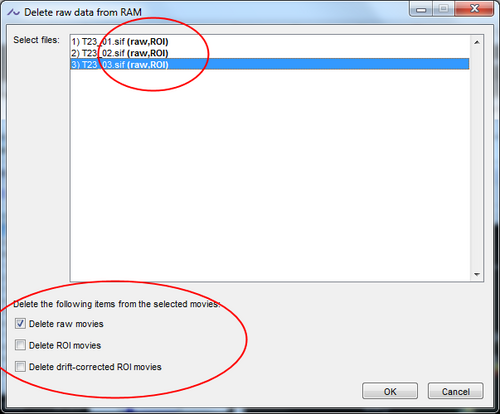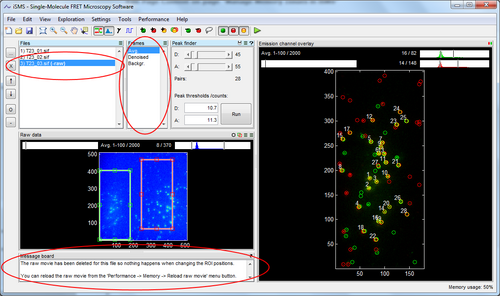iSMS is intentionally designed to process raw image data interactively. While this makes data analysis more fun it also imposes a requirement to the amount of RAM on your computer.
iSMS stores all loaded image arrays as unsigned 16-bit integers (uint16). This data type forces a constraint on the range of pixel values that the raw data can have, namely integers in the range 0-65535. This is also the typical raw data range for cameras, however, this constraint means that all negative values in the raw data, and after camera background subtraction, is set to 0.
For uint16 data types, each pixel takes up 2 bytes of RAM. For large movies, the raw image data thus takes up a lot of memory. For example, a single 512x512 movie with 2000 frames takes up 512*512*2000*2 = 1048576000 bytes = 1.049 Gb of RAM.
In addition to the full raw movie, iSMS cuts and stores in RAM a raw movie of each emission channel ('ROI movies'). This is in order to process calculations faster and to save memory since the ROI movies require less RAM than the full raw movie.
When using drift-correction, iSMS stores the drift-corrected movie in addition to the uncorrected movie ('Drift corrected ROI movies'). This is in order to be able restore the original data if an attempt at drift compensation fails for some reason.
In iSMS, raw image data can be removed from RAM without loss of any processed data, such as FRET-pairs. This effectively solves memory issues since the memory required by the processed data is negligible compared to the raw image stack.
The raw image data can, and should, be removed from RAM once all intensity traces have been calculated. On a machine with 8 Gb RAM you are typically able to analyse 4-5 raw movies of size 512x512 x2000 frames at a time - twice as much on a 16 Gb machine.
When saving a session, iSMS only saves the processed data and not the raw image stack. Instead, the raw image data can be reloaded from file after opening the session. In this way, raw image data is loaded, removed, and reloaded into memory over and over during the data analysis.

